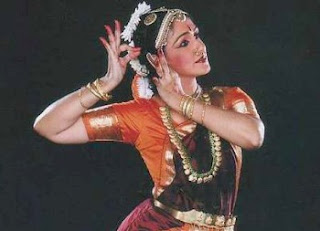THE HIDDEN TEXT
Satyabrata Rout
 |
| Windows-8 |
Reading a play and
seeing a performance are two different thing. By reading we can come across
with the written words of the playwright. We imagine the events, situations and
characters by reading the play but the world of imagination will be limited to
the written words of the author and the personal experiences of the reader. But
seeing a play is quite different. Here the spectator has to go through various
layers of experiences and can share them with the writer, director,
scenographer, performers, and co spectators, etc. For him these experiences are
like happenings of life. In a way we always pass through collective experiences
and share common understandings in theatre.
If we analysing the
concept of some visionaries, we can find how their personal life experiences
work as subconscious to bring out visuals into their productions. I called
these visuals as hidden text; a text which needs no support to be
communicated since it comes out of pure human experiences. This text cannot be
transcribed into words but transcribed in the mind and heart of the spectators
and helps them in sharing the experiences of others.
Ratan Thiyam has
described this hidden text in his own way;
“I never believe on
static design with heavy set elements. I just need a working space where I can
create my visuals. My compositions are like paintings which I erase to create
new, at every time. The colours, form and compositions of my narrative
paintings are the outcome of the nature; the north east hills which I have
observed and interacted from the day I opened my eyes in this world. Its changing hues, moods and atmosphere
always remain major source of my visual compositions.
(Ratan Thiyam in an interview with the
author)
Bansi Kaul’s
interaction with hills and snows of the Kashmir valley works as the hidden text
for his production design. He also shared some similar experiences;
“I understand where
I picked up this vastness into my design. As a child in Kashmir I have seen landscapes
covered with white snow; an empty space with no colour except an endless white
canvas. I have observed the birds those hopped above the snow; leave behind
their foot marks as an impression on this white earth. They are like floral
patterns which creep into my design time and again and remained in my
subconscious.”
(Bansi Kaul in an interview
with the author)
But from where this
hidden text comes? It can never appear from nowhere and take the centre stage suddenly.
It must be lying somewhere in the play that surfaced during the exploration. It
must be hidden behind the written words of the playwright and lay beneath the
pause in between the dialogues. The scenographer can visualise these subtexts
through his personal experiences and bring them into pictures. As we understand
them in the conversation of Robin Das as --psychological atmosphere.
The prime
responsibility of a scenographer is not to provide locals or build a magnificent
set for the play but to discover and unearth those hidden texts lying hundreds
of layers below the written text and bring them into the form of psychological
atmosphere.
Once you scratch the
words and plunge into it, you will find a whole new world waiting to be
explored. This new world can tell you a complete different story parallel to
the playwright supported by your personal interaction with life. Sometimes the
scenographers misinterpret this world of visuals as different from the main context
of the play and work separately on the visuals. They try to mould the play into
the scenographic dramaturgy they have formed independently. Here lies
the mistake. The play has nothing to do with the scenographic dramaturgy that
is evolved independently. This scenography has nothing to do with the play since
it does not reflect through the written text. It is formed out of preoccupied
and preconceived mind of the designer who wants to project his power of
intellect through the production. The colour, texture, rhythm and movement of
the scenographic dramaturgy created out of your imagination in which you
want to mould the production remains different from the written world. This
experiment may not be accepted by the spectators which keeps them away from participation
and the production would remain inaccessible. In this case it would be better
to write your own text and present rather than to spoil the concept of a writer.
The scenographic dramaturgy which comes out of the hidden text of the play should
be an extension of the written words of the playwright.
(Expert from my book “Space, performances,
developing design: An Indian perspective”, waiting to be published)
__________________________________________________________________________
Dr. Satyabrata
Rout/ Associate Professor, Dept. Of Theatre, University of Hyderabad-500046










